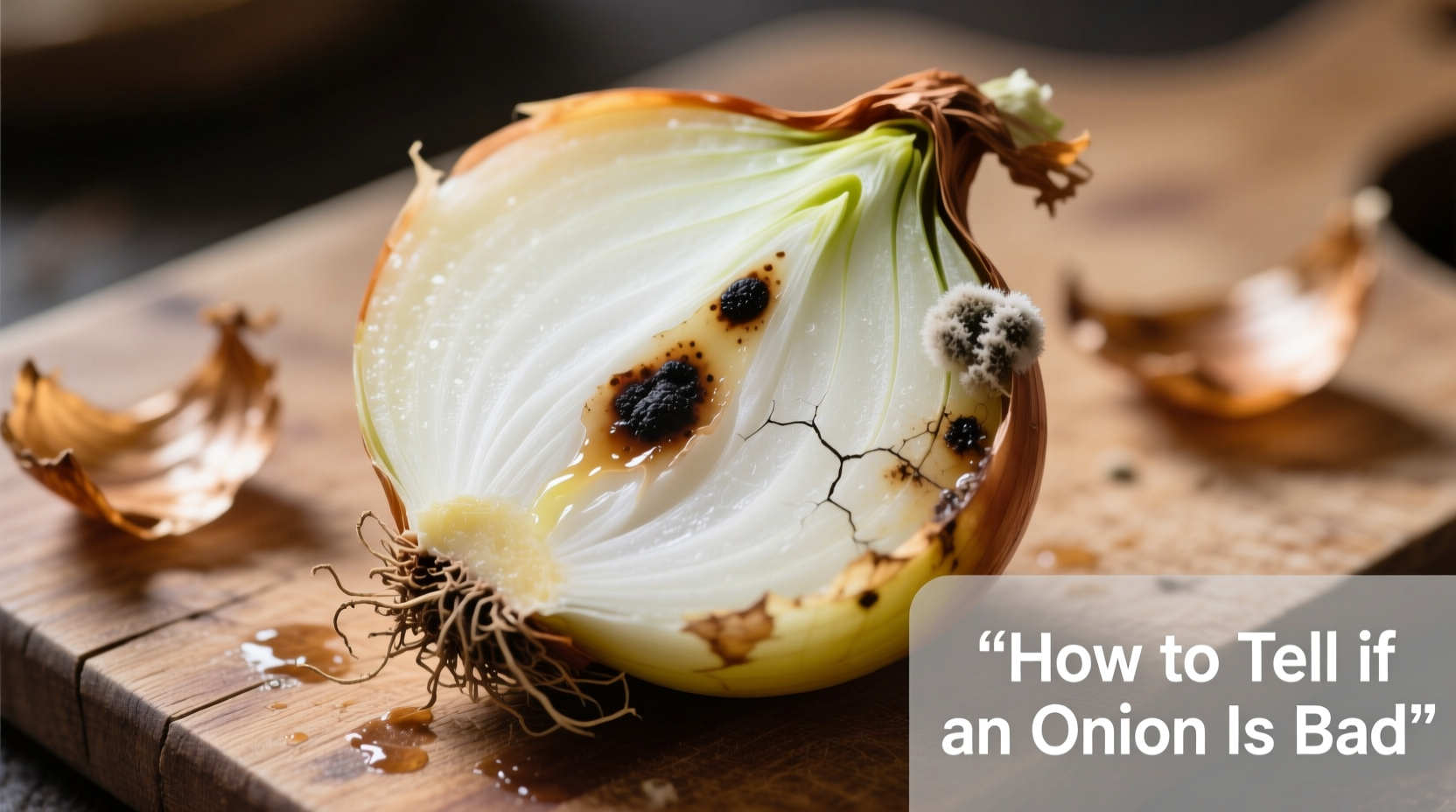Discover exactly what to look for when checking your onions for spoilage. This guide gives you seven definitive signs that your onion has gone bad, plus practical storage tips to extend freshness and prevent waste. Learn how to distinguish between harmless sprouting and dangerous mold, understand proper storage conditions, and make safe decisions about using questionable onions.
Visual Inspection: What to Look For
Start your onion assessment with a thorough visual check. Healthy onions should have dry, papery outer skins that feel crisp to the touch. Any visible changes to this protective layer signal potential problems.
According to the U.S. Food and Drug Administration, proper visual inspection is the first critical step in determining vegetable safety. The FDA recommends discarding produce with visible mold growth as certain molds can produce mycotoxins that may cause health issues.

Texture Tells the Truth
Gently squeeze your onion to assess its firmness. A fresh onion should feel solid and heavy for its size. If you detect any soft spots, mushiness, or areas that give way under light pressure, these indicate internal decay.
Research from the University of California Agriculture and Natural Resources shows that moisture accumulation inside the onion layers creates ideal conditions for bacterial growth. Once an onion becomes soft or slimy, it's entered an advanced stage of decomposition that cannot be reversed.
Smell Test: Your Nose Knows
Fresh onions have a characteristic sharp, slightly sweet aroma. As onions spoil, they develop unpleasant odors that range from sour to musty to distinctly foul. If your onion emits any odor that makes you hesitate, trust your instincts and discard it.
Food science studies at Cornell University confirm that spoiled onions produce volatile organic compounds that create these off-odors. These compounds indicate microbial activity that compromises both safety and quality.
Understanding Sprouting: When It's Still Safe
Sprouting doesn't automatically mean your onion has gone bad. Many onions will begin sprouting as they age, which is simply the onion attempting to grow new plants. While sprouted onions have reduced flavor and texture quality, they're generally safe to eat if other signs of spoilage are absent.
Remove the green sprouts and any soft layers, then use the remaining firm portions promptly. The USDA confirms that sprouted onions remain safe for consumption as long as no mold or significant softening has occurred.
Storage Mistakes That Accelerate Spoilage
Improper storage dramatically shortens onion shelf life. Common mistakes include:
- Storing onions in plastic bags (traps moisture)
- Keeping onions near potatoes (emits gases that accelerate sprouting)
- Refrigerating whole onions (causes moisture buildup)
- Storing in humid environments
| Good Onion Characteristics | Bad Onion Characteristics |
|---|---|
| Dry, papery outer skin | Mold growth (white, green, or black) |
| Firm texture throughout | Soft, mushy, or slimy spots |
| Distinct onion aroma | Sour, musty, or foul odor |
| Heavy for its size | Lightweight or hollow feeling |
| No visible dark spots | Dark patches beneath skin |
Proper Storage for Maximum Freshness
Extend your onions' shelf life with these science-backed storage techniques:
- Store in a cool, dark, well-ventilated space (55-60°F is ideal)
- Use mesh bags or baskets instead of plastic containers
- Keep away from potatoes and other ethylene-producing produce
- Never wash onions before storage (adds moisture)
- Check stored onions weekly and remove any showing early spoilage signs
When stored properly, yellow onions can last 2-3 months, red onions about 1-2 months, and white onions approximately 1 month. Sweet onions have the shortest shelf life at 3-4 weeks due to higher water content.
When to Definitely Throw Out an Onion
Discard onions immediately if you notice:
- Extensive mold growth (even if confined to outer layers)
- Black or brown centers when cut open
- Significant softening or sliminess
- Foul or ammonia-like odors
- Visible insect damage or infestation
Remember that cutting away moldy portions isn't safe with onions. Unlike hard cheeses or firm vegetables, onions' layered structure allows mold to penetrate deep into the tissue even when not visible on the surface.
Food Safety Considerations
Consuming spoiled onions can cause foodborne illness with symptoms including nausea, vomiting, and diarrhea. The Centers for Disease Control and Prevention reports that improperly stored vegetables can harbor pathogens like Salmonella and E. coli.
When in doubt about an onion's safety, follow the food safety maxim: "When uncertain, throw it out." The minor cost of replacing a questionable onion pales in comparison to potential medical expenses from foodborne illness.











 浙公网安备
33010002000092号
浙公网安备
33010002000092号 浙B2-20120091-4
浙B2-20120091-4